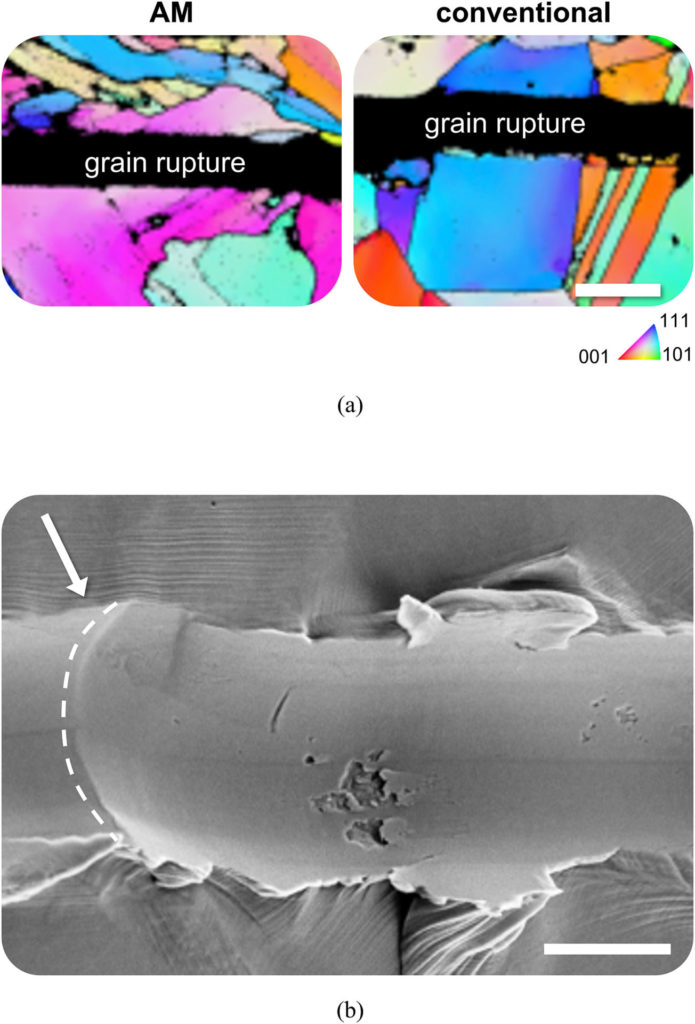Additive manufacturing of medical devices can be used to fabricate the next generation of patient-specific implants and customised interventions. In particular metal additive manufacturing can be used to produce a wide range of load bearing orthopaedic and cranial implants.
However, a consensus on the tribological performance of components by additive-versus-conventional manufacturing has not been achieved; mainly because the tribological test set-ups thus far were not suited for investigating the underlying microstructure’s influence on the tribological properties.
As a result, utilization of additive manufacturing techniques, such as selective laser melting (SLM), for tribological applications remains questionable. Here, the Imperial researchers investigate the anisotropic tribological response of SLM 316L stainless steel via in situ SEM reciprocating micro-scratch testing to highlight the microstructure’s role.
These findings uncover some microstructurally driven tribological complexities when comparing additive to conventional manufacturing.
This study found that:
- Microgeometric conformity was the main driver for achieving steady-state friction,
- The anisotropic friction of the additively manufactured components is limited to the break-in and is caused by the lack of conformity,
- The cohesive bonds, whose strength is proportional to frictional forces, are stronger in the additively manufactured specimens likely due to the dislocation-dense, cellular structures,
- Low Taylor-factor grains with large dimension stimulate microcutting in the form of long, thin sheets with serrated edges. These findings uncover some microstructurally driven tribological complexities when comparing additive to conventional manufacturing.

Read more: Bahshwan, M., Gee, M., Nunn, J., Myant, C. W., & Reddyhoff, T. (2022). In situ observation of anisotropic tribological contact evolution in 316L steel formed by selective laser melting. Wear, 490, 204193.
Header Image: Contrasting the microstructure of 316L by additive manufacturing versus conventional manufacturing. The bottom photos show the actual specimens. The top cubes are microscopic images of etched specimens.

